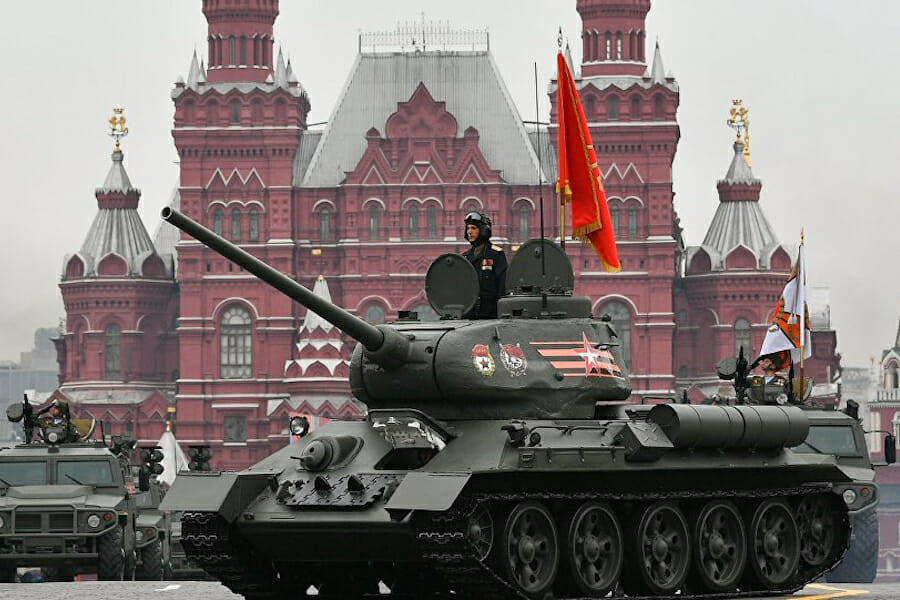
Russian Propagandistic Rhetoric during the Chechen Wars
In the twenty-first century, the “war of ideas” has replaced conventional warfare. While war has traditionally been waged behind the barrel of a gun, it has become increasingly common for nation-states to stray to more unconventional methods, instead choosing to weaponize words and images in an attempt to influence the attitudes of both their supporters and their adversaries. Better known as propaganda, this deliberate spread of these ideas, facts, and allegations is done with the explicit goal of furthering one’s own cause or damaging an opposing cause, and it is an instrumental tool in an insurgent’s arsenal. The case of the Chechen wars in the late twentieth and early twenty-first century demonstrates the successful usage of anti-terrorist rhetoric in Russian propaganda efforts against Chechen insurgents, highlighting the key role that language can play in dehumanizing a social group and perpetuating an “us versus them” dynamic.
Overview of the Chechen Wars
The First Chechen War in the early 1990s was the culmination of increasing tensions between the Russian Federation and Chechnya, a federal subject of Russia. The war resulted in Chechnya’s de facto independence as a semi-autonomous state, the Chechen Republic of Ichkeria. The first war in Chechnya began as a nationalist struggle in Russia that was primarily focused on gaining independence and achieving self-sovereignty after the fall of the Soviet Union. Three years after the first war ended, the Second Chechen War ignited as Islamist fighters from Chechnya infiltrated Russia’s Dagestan region, calling for a jihad until “all unbelievers had been driven out.” The adoption of a religious tone during the second war differed drastically from the first conflict’s nationalist sentiments and provided Russia with an opportunity to launch a sophisticated media campaign that capitalized on anti-Islamic rhetoric.
Russia: Anti-Terrorism Framework
Since the devastating attacks carried out by Islamic extremists on American soil in September 2001, Russian leaders have capitalized on the global anti-terrorism outlook in their efforts to reverse the “humiliating” defeat that they suffered in Chechnya during the first war. As a result, during the Second Chechen War, Russian authorities employed an anti-terrorist framework, equating their conflict with rebel forces in the Chechen Republic to a “crusade against terrorism” that was part of a larger “global war on terror.”
Additionally, in their response to the Chechen resistance, Putin’s administration claimed to be a “guarantor of ‘traditional’ and ‘authentic’ Chechen culture,” and furthered this anti-terrorist framework by calling Russian counterinsurgency forces “counterterrorism operations aimed at protecting the Chechen people and stamping out this foreign menace.” The Russian government’s unique “invasion” framework, paired with their use of labeling terms such as “‘terrorists,” “extremists,” and “invaders” in an attempt to define [the Chechen conflict] in line with the broader global narrative against Islamist terrorism” effectively dehumanized, delegitimized, and weakened the opposition’s credibility. An example of this dehumanizing language and labeling can be seen in Putin’s summary of Russia’s counterterrorism strategy during the midst of the Second Chechen War: “We will chase terrorists everywhere. If in an airport, then in the airport. So if we find them in the toilet, excuse me, we’ll rub them out in the outhouse. And that’s it, case closed.”
Putin’s reference to “rub[bing] them out in the outhouse” equates the Chechen insurgents to bugs or vermin that need to be exterminated. This type of comparison and this dehumanization of the enemy is one of the primary goals of rhetoric used in propaganda efforts. Not only does this type of discourse allow Russia to be in control of the narrative, but it evokes an emotional response from those who listen to it. Known colloquially as branding, this is when an individual is conditioned to associate a given product, person, or idea with a desired physical or emotional response. In Russia’s case, they attempted to condition their citizens to associate the Chechen insurgents with vermin in hopes of invoking feelings of hatred and dislike.
The Russian government’s terrorist narrative quickly spread throughout the country. In 1999, Putin’s administration ordered “all Russian news media to refer to the Chechen resistance fighters as ‘terrorists’ rather than designations such as ‘rebels’ or ‘insurgents.’” Whether or not a group utilizes the media as an effective recruiting and mobilizing tool is subjective, but Russia’s successful manipulation of the media was compounded by their effectiveness at “heightening anti-Chechen sentiments and ‘Caucasophobia’ among ethnic Russians.” All of these tactics, when paired together, improved Russia’s ability to maintain public support by demonizing the Chechen insurgents and portraying them as representatives of Islamic terrorism. Furthermore, when terrorist attacks were carried out in Russia during the 1990s, such as the Moscow apartment building bombings, the Russian government used those incidents to demonize the entirety of the Chechen rebel movement. This use of branding, of associating an incident with a particular emotional response, successfully evoked vengeful thoughts and behavior by Russian citizens against those in Chechnya.
Concluding Remarks
Per Victoria Tang in “Why ISIS Is Winning the Social Media War,” “An extremist movement’s success often depends on its ability to master the latest means of communication.”
In the case of the Chechen wars, Russia’s employment of an anti-terrorism framework highlights the propensity with which language can impact the outcome of a social movement, whether that be a deadly war or a peaceful riot. While Chechen rebels and Arab Mujahideen simply wanted to establish their own Islamic community in the region, Russia’s dissemination of a single narrative of anti-terrorism proved more effective in the long run, leading to Russian success in the end.

